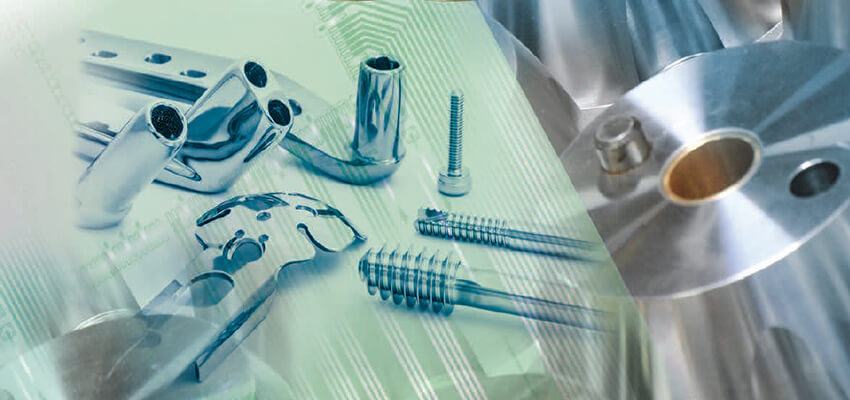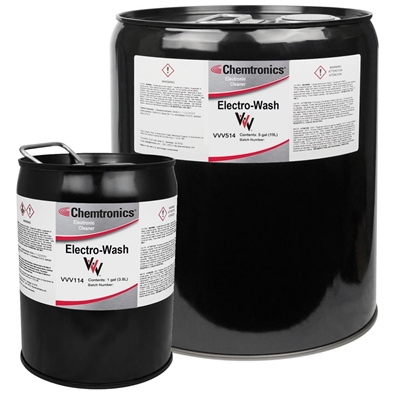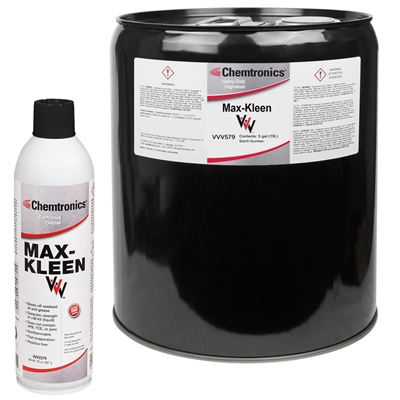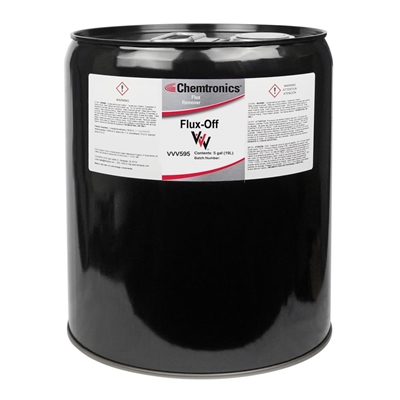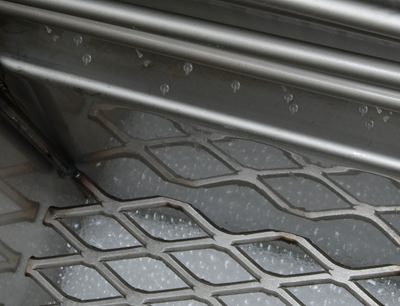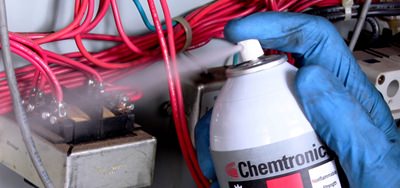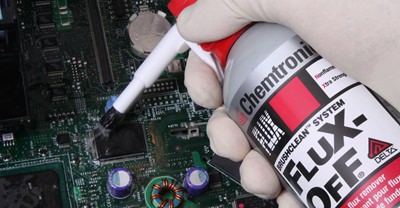Vapor degreasers are very efficient at removing soils from a variety of surfaces, and can remain efficient relatively easily. But the solvent in the degreaser can become spent, which happens when either the solvent is saturated with soil, or the solvent stabilizers have begun to acidify or “go acid”. Determining when this stage has been reached can be a concern.
Soil Saturation Level
There are a variety of ways to determine the soil saturation level, including an increase in boiling temperature, or a shift in specific gravity which can show that the system has reached its soil loading capacity. Soil loading capacity of 25% oil by volume is reached when solvent boiling temperatures climb, increasing 5 to 10°F, dependent on the specific solvent being used (in this case TCE and perchloroethylene specifically, source: GAPS Guidelines, GAP.9.2.5.1, SOLVENT VAPOR DEGREASING, accessed 09-06-2016). Although this is a useful measure of soil loading, this test does not show the integrity of the solvent. A simple way to determine this is the acid acceptance test.
Determination of Acidity
As a halogenated solvent is used in a vapor degreaser, the solvents can slowly break down and form acidic species when exposed to catalytic contaminants such as magnesium, zinc, aluminum, and other fine metal particles. In addition to these contaminants, water that is introduced into the vapor degreaser as condensation can accelerate the decomposition and simultaneously remove the stabilizers that are introduced into the degreasing solvent to prevent the solvent breakdown. These acidic materials can etch and corrode metals in the vapor degreaser and the parts to be cleaned.
The acid number test can be run to determine if the solvent has reached the end of its useful life due to acid formation. Several test methods are available for measuring this, including IPC-TM-650 2.3.36 “Acid Acceptance of Chlorinated Solvents", and ASTM D2110 - 00(2012) “Standard Test Method for pH of Water Extractions of Halogenated Organic Solvents and Their Admixtures”.
A simplified method for this based on ISO 1393 specification is as follows:
Determination of acidity - Titrimetric method
Apparatus:
- Separatory funnel
- Erlenmeyer flask
- 25 ml Burette
Reagents:
- 0.01 N NaOH solution from laboratory supply houses (read SDS before use)
- 1% Phenolphthalein Indicator in ethanol solution – also from laboratory supply houses
- Neutralized pure water with 0.5 gms of sodium chloride per 100 gms water
Procedure:
- Weigh 100g of sample and 100 g of neutralized pure water. Place in a separatory funnel.
- Shake funnel vigorously for three minutes with a shaker.
- Place the funnel in a ring stand and allow to stand until distinctive layers form.
- Draw off the solvent layer and discard, utilize the aqueous layer (upper layer) and place into an Erlenmeyer flask.
- Add 3 drops of indicator and swirl.
- Titrate with 0.01N NaOH solution with constant swirling.
- Gradually reduce the successive amounts of 0.01N NaOH solution added as the endpoint is approached. The endpoint is reached when the solution with indicator changes from colorless to red light.
- Record the volume in millimeters of the NaOH solution used in this titration as “S”.
- Place 100g of neutralized pure water in an Erlenmeyer flask and add 3 drops of indicator.
- Titrate with 0.01N NaOH solution in the same manner described above.
- Record the volume in millimeters of the NaOH solution used in this blank titration as “B”.
Calculation:
Acidity (ppm as HCI) = [0.000365 x (S-B)/W] x 106 where:
- S = milliliters of 0.01N NaOH solution required to titrate the sample.
- B = milliliters of 0.01 N NaOH solution required to titrate the blank.
- W = weight of sample (grams).
A good rule of thumb as far as the pass/fail number on this test would be about 3 ppm. Depending on the needed criteria of performance determined by the end use products and performance, this could be higher or lower.
Performing this test periodically avoids a drop in cleaning performance and potential damage to vapor degreasing equipment as the solvent becomes more acidic. You can set guidelines so operators know when it is appropriate to “top off” the solvents, and when they should drain the vapor degreaser equipment and refill with fresh material.
Be sure to submit your questions below, and if you need a solution for your vapor degreasing, contact us.

